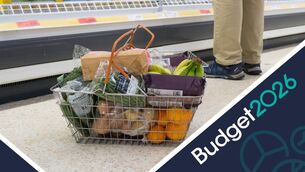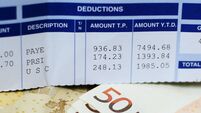Reducing Vat rate a blunt and costly policy instrument for hospitality

The sector has identified high energy costs, softening demand, labour market challenges, increased cost of inputs, and a lack of hotel capacity as the main challenges facing the industry and the rationale for a return to the 9% VAT rate.
Less than a week on from its publication, one of the fundamental assumptions underpinning the summer economic statement has changed with the agreement of the EU-US trade deal. This will have implications for October’s budget and a potential reduction in the overall budgetary package outlined by the Government just a week ago.
Of the total budget package detailed in the summer economic statement, €1.5bn has been allocated to a "tax package".
The Government identifies the narrowness of Ireland’s tax base as a cause of concern in the summer economic statement, noting that income tax, corporation tax, and revenue make up the bulk of Ireland’s tax base.
At a time of heightened global economic uncertainty, increased tariffs for Irish exporters, a growing and ageing population, increasing demand for and pressure on services, a further narrowing of Ireland’s tax base in the budget would seem at odds with the programme for government commitment to maintain a broad tax base "to guard against the need for counter-cyclical fiscal policy in the event of a downturn" and prepare for demographic change.
Much of the subsequent discussion on the so-called "tax package" has been the commitment in the programme for government to support the hospitality sector through changes to Vat and its implications in terms of the space available for any income tax changes in the budget.
This discussion fails to look at the broader context, the impact to date of "tax packages" introduced by the previous government from 2020-2025, and the precariousness of Ireland’s tax base.
Looking at budgetary policy of the last government, income gaps have opened up between working households, and the gap between people and households at the bottom and middle of the income distribution and those at the top has grown.
This has been driven by the skewed nature of income tax reduction choices which prioritised higher earners and provided relatively little to low income workers paying income tax at the standard rate.
This was further compounded by the concentration of temporary cost-of-living measures among lower income households, supports that will fade away. The tax packages contained in those budgets are permanent, costly, and have not reached those working households who have been most impacted by rising costs.
Rather than looking at how to build a broad and sustainable tax base, recent discussion has focused on the "tax package", the cost of the aforementioned Vat reduction for the hospitality sector, which would narrow Ireland’s tax base further, and how much this would leave for an "income tax package" which — if modelled on previous budgetary policy — will see the income gaps between working households grow further.
Looking at Vat, it accounted for 23% of Ireland’s total tax revenue last year. At present, the hospitality sector is subject to the reduced 13.5% Vat rate. The sector was subject to the lower rate of 9% from 2011 to 2018, and again from late 2020 to mid-2023 at an estimated cost of €3.6bn.
The sector has identified high energy costs, softening demand, labour market challenges, increased cost of inputs, and a lack of hotel capacity as the main challenges facing the industry and the rationale for a return to the 9% VAT rate.
However, a recent Department of Finance examination of the Vat reduction for the hospitality sector since 2011 concluded that the reduction was not always passed on to customers in the form of lower prices, it was highly regressive in that it benefitted higher income households more than lower income households, and it was very costly.
Reducing the Vat rate is a very blunt and costly policy instrument. It will not lower energy costs, it will not increase demand, nor will it address the challenge of full employment or produce more hotel capacity — the very issues that the sector itself has identified as major challenges.
The Government and the sector must look at other available sustainable measures to support the industry, including measures used in other EU member states to support hospitality and tourism.
Calls for new tax breaks, or the return of old ones, are a feature of most periods of economic and social recovery. However, their provision involves great cost to the State and the unequal allocation of these resources to small groups of beneficiaries.
Few of these initiatives have proven to be worthwhile in the past — in particular the opportunity cost of using the revenue in a better way is frequently overlooked.
As the first of the kites are flown in advance of Budget 2026, the Government should turn its attention to those who have been most impacted by persistent rising prices, and use the resources available to ensure that vulnerable households are protected and supported through adequate social welfare rates, and that growing income gaps between working households are closed.
This requires developing progressive policies and measures in a fair taxation system, and working with the hospitality sector to identify sustainable ways to fund the maintenance of the hospitality and tourism industry.
A reduction in Vat for the hospitality sector is costly and it won’t address the challenges the sector faces. It didn’t address these core issues in the 124 months that it was applied between 2011 and 2023, and there is no evidence to suggest that it will do so if applied again in Budget 2026.
- Michelle Murphy is a research and policy analyst at Social Justice Ireland
















